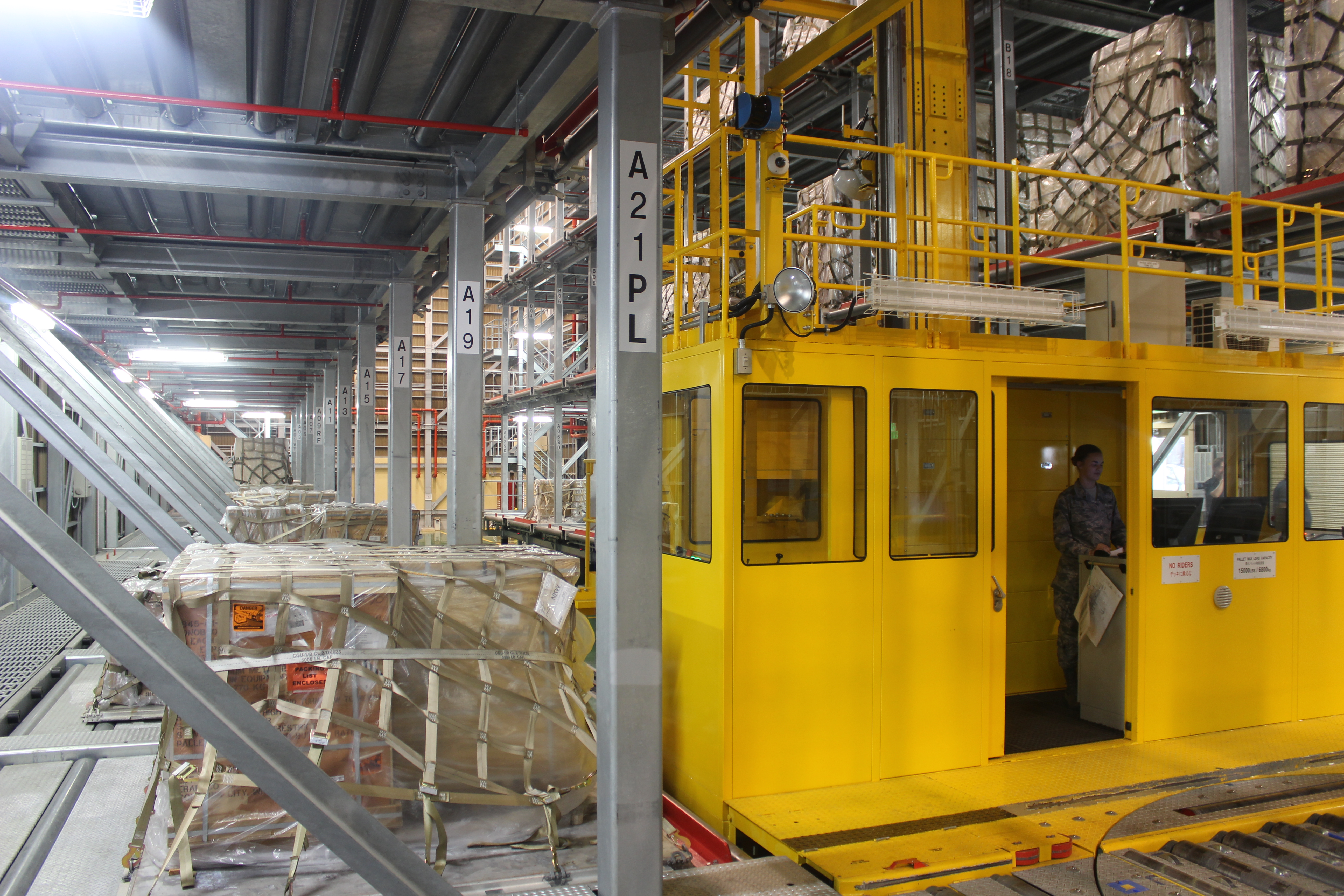A1C Alexandria Ahern, an air freight technician with the 515th Air Mobility Operations Group, operates the controls of the automated warehouse at Yokota AB, Japan. Staff photo by Brian Everstine
YOKOTA AB, Japan — The aerial port warehouse at the USAF hub in the Pacific is the most advanced in the service, and one the service wants to serve as a model for other mobility locations globally.
The 515th Air Mobility Operations Group operates an aerial port that automatically positions and prioritizes pallets for airlift missions across the theater, cutting the amount of time and manpower needed to load an aircraft and get materiel on the move.
“It’s vitally important that we have this capability, particularly in this location because this is where our war planners are saying is going to be the hub of cargo,” said MSgt. Harvey Freeman, an air freight specialist with the 515th AMOG.
The Yokota port can hold up to 265 pallets inside its automated system, and coupled with the docks, can hold up to 400 pallets. The port system has one huge and one small refrigerator, along with a large freezer, which is used for items such as perishable food for humanitarian aid or for human remains.
The system can build, process, and load cargo for an airlifter in an hour and a half with little to no hands-on work. A regular port would take four personnel about four hours, said A1C Alexandria Ahern, an air freight technician with the 515th AMOG.
“It’s definitely a big help,” Ahern said.
The cavernous Inventory Control System automatically stores and prioritizes pallets, with just inputs from an airman from a computer terminal. At 11 p.m. every night, the port’s system automatically turns on and organizes pallets, for example loading them in order of their importance and by location, so aircraft in the morning can be loaded quickly.
While other USAF bases also have an ICS system — locations such as Dover AFB, Del. — the Yokota system is the most advanced and is outfitted with more sensors than any other system. For example, the Yokota system automatically weights pallets as they are processed, and if that number is different than what is initially put into the system, it will kick it out automatically for review, Freeman said.
Ports like these are a model from which Air Mobility Command wants to build on. AMC boss Gen. Carlton Everhart told Air Force Magazine last fall that the command had invited scientists and researchers to visit Dover’s port as part of a new effort to use automation and artificial intelligence to improve port efficiency. The effort, called “Aerial Port of the Future,” also included viewing commercial warehouses that are using modern robotics and command and control systems in an overall effort to “get the right loads in the right place at the right time,” Everhart said.
